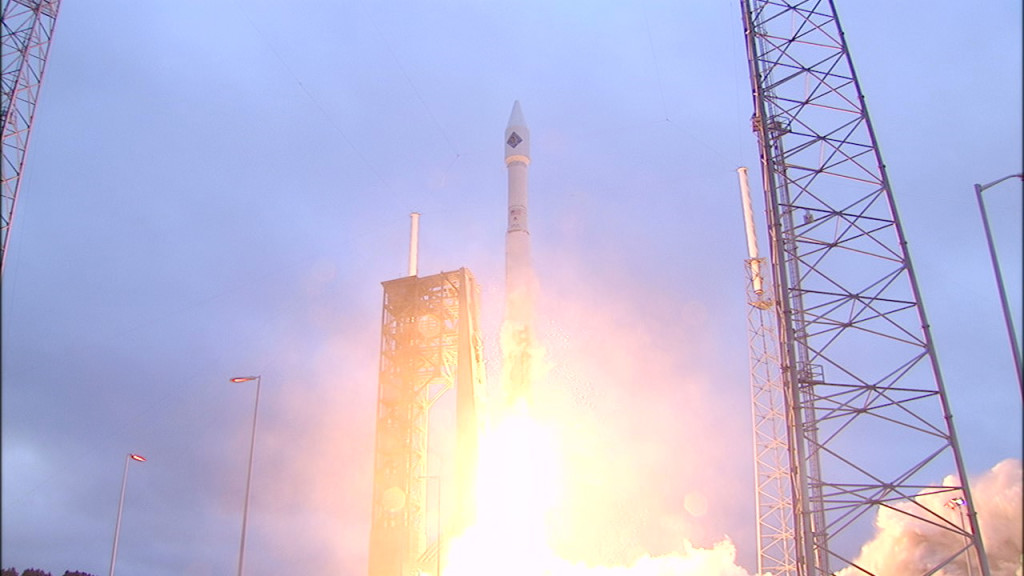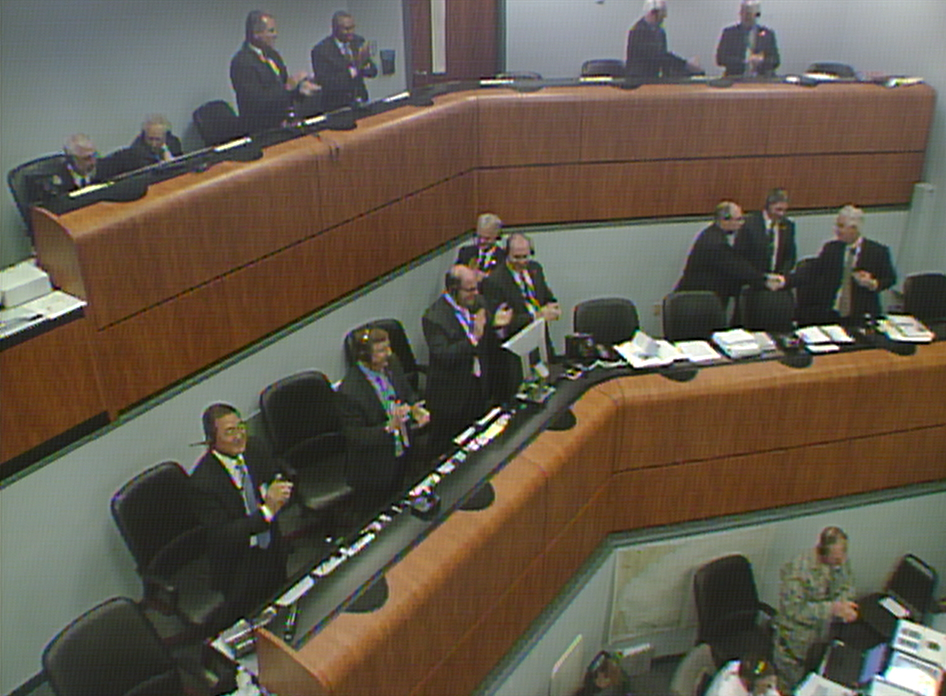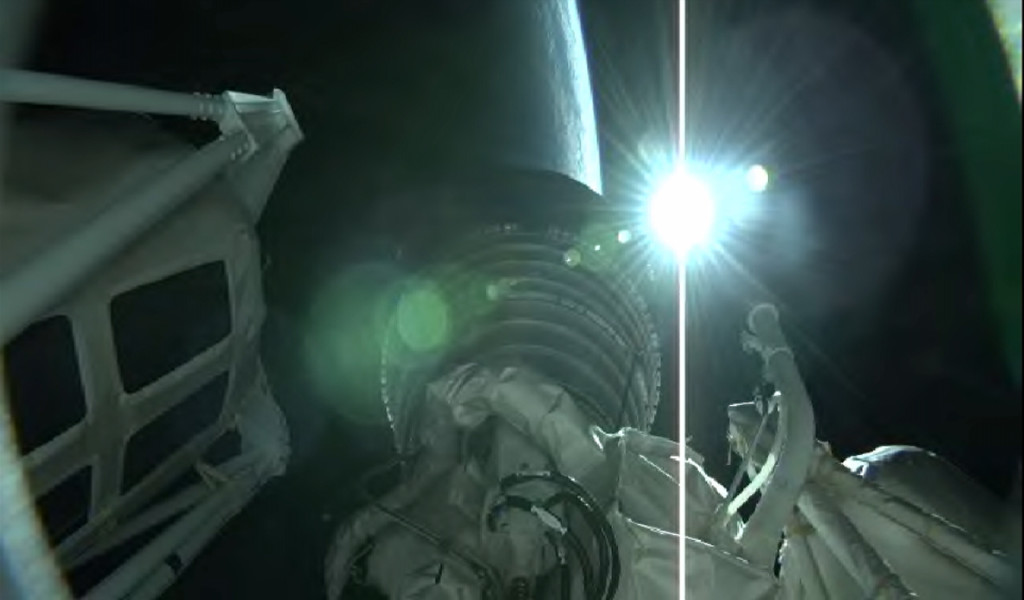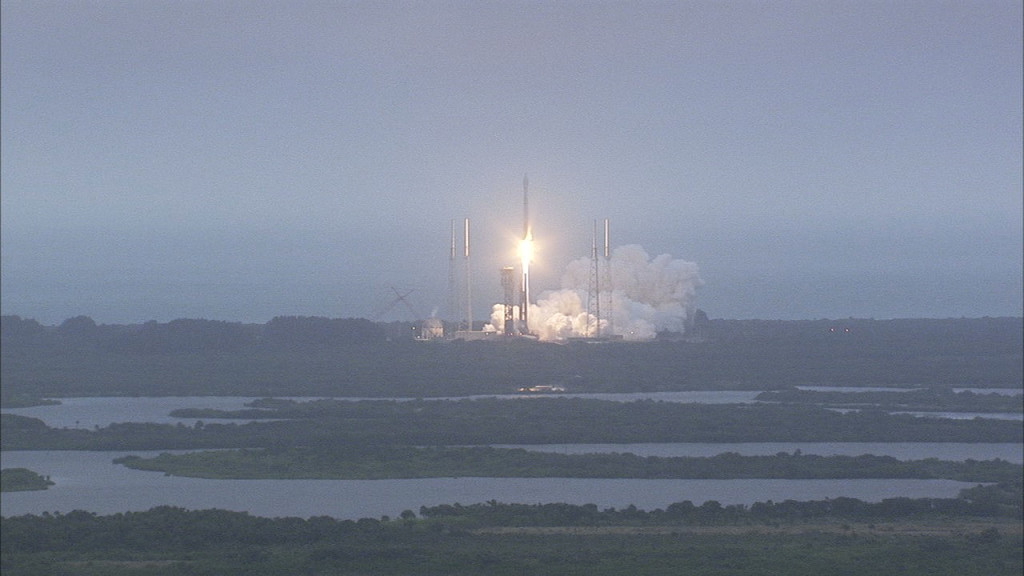Author: Steven Siceloff
Cygnus to Deploy Solar Arrays Later Today
 A pair of twin, circular solar arrays on the Cygnus spacecraft will unfurl in about 30 minutes to provide electrical power to the spacecraft. Seen here in ground processing, the arrays are upgrades to the ones flown previously on Cygnus spacecraft. They are lighter than their predecessors but provide the same amount of electricity for the Cygnus’ systems.
A pair of twin, circular solar arrays on the Cygnus spacecraft will unfurl in about 30 minutes to provide electrical power to the spacecraft. Seen here in ground processing, the arrays are upgrades to the ones flown previously on Cygnus spacecraft. They are lighter than their predecessors but provide the same amount of electricity for the Cygnus’ systems.
Launch Team Cheers Flawless Flight
Cygnus Flies Free!
Orbital ATK’s Cygnus spacecraft is on its own and on its way to the International Space Station! Cheers fill the control rooms.
MECO – Centaur Engine Shuts Down
With the Cygnus and Centaur achieving orbit, the single engine of the rocket stage has shut down. Two minutes, 49 seconds to separation of the Orbital ATK Cygnus spacecraft.
16,286 mph
One minute until the Centaur’s engine shuts off, the Cygnus spacecraft is moving at more than 16,286 mph.
Four Minutes Left in Burn
12,000 MPH
Launch Image
RL-10 Engine Shown Maneuvering
As the second stage burn continues, an on-board camera shows the Centaur’s RL-10 engine doing its job to continue lifting the Orbital ATK Cygnus spacecraft higher and faster on its precise course to catch the International Space Station.




